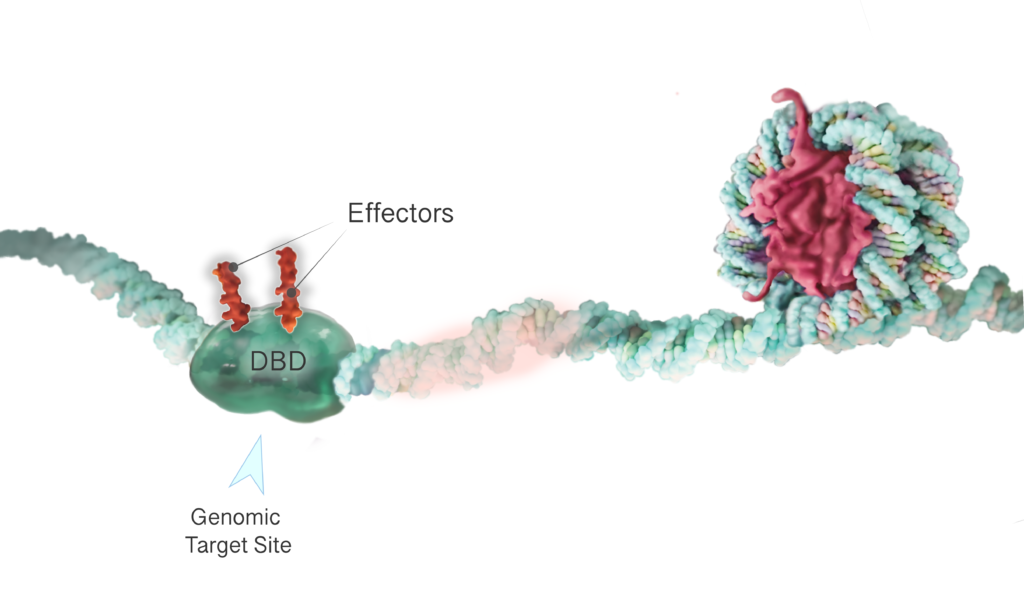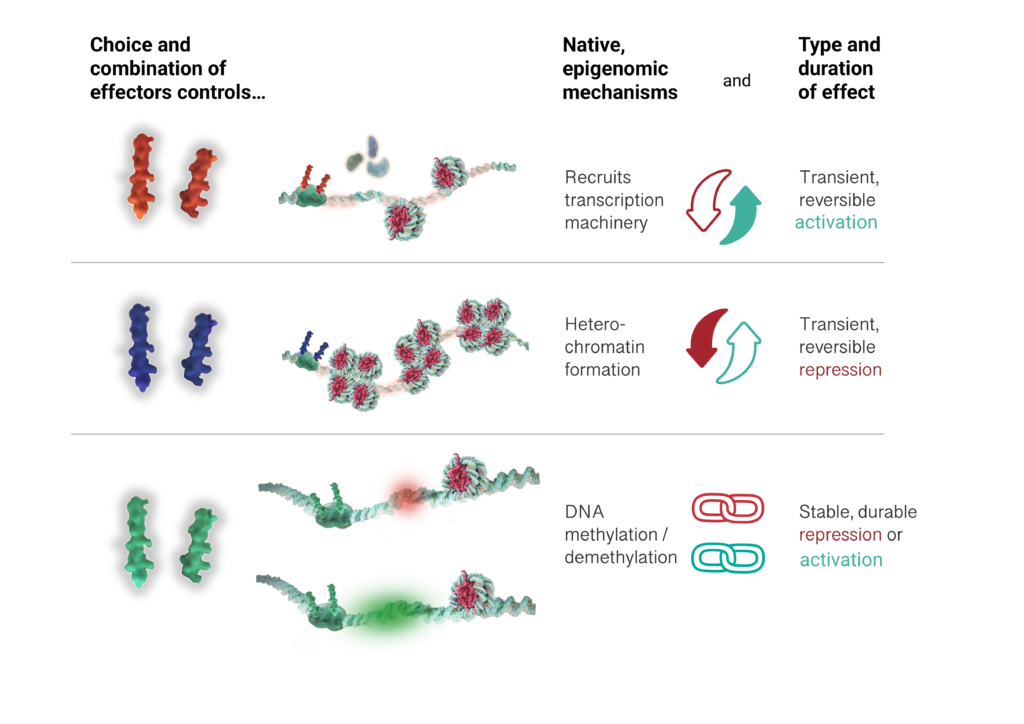Genetic Medicine is at a Tipping Point
Until now, scientists lacked the full range of tools, understanding, and expertise needed to make precise genetic tuning a reality. At Tune Tx, we have all three.

Volume Control vs Knockout Power
Our proprietary genetic tuning platform, TEMPOTM, shares a pedigree with the gene editing technologies that preceded it. But where it differs fundamentally is in its ability to control the way genes behave in a graded, tunable, and reversible manner, as compared to the all-or-nothing, irreversible interventions (deletions and knockouts) common to most gene editing approaches.
This is an important distinction, as it allows us to circumvent many of the technical and clinical barriers that have hindered the development of previous genomic therapeutics. In some therapeutic contexts, the permanent loss of gene output is desirable or necessary. Here, TEMPO can silence specific genes without risking collateral damage to targeted (or non-targeted) DNA. But in other contexts a partial reduction or activation of gene expression is preferable to total knockout or forced over-expression. And here, TEMPO has the unique capacity to tune and modulate specific genes as needed.
TEMPO Anatomy & Function

TEMPO is a modular platform with two switchable elements. Namely:
DNA-Binding Domain (DBD)
As its name suggests, the DNA-binding domain enables TEMPO to bind to a tightly-targeted region of the genome by recognizing specific DNA sequences that lie around the target gene. Any of the commonly used DNA-binding domains used in genome editing (Cas, ZFP, TALES, etc) can be utilized by TEMPO but are modified so that they cannot cut DNA.
Using any of these options, the DNA-binding domain guides the protein to a specific genomic target site. These target sites may lie close to the gene of interest or at some distance upstream or downstream, and they differ widely in their collective contributions to gene expression and activity. Some sites (dubbed enhancers) act in concert to enhance or increase gene activity, while others (repressors) act to decrease gene activity. So the choice of genomic target site impacts the overall magnitude and direction of expression change.
Using powerful, unbiased screening methods, we can screen the areas around a specific gene (or even entire genomes) to identify hidden enhancers and repressors, along with the precise targeting sequences that bind them most effectively.
Effectors
Once TEMPO has arrived at its targeted location, the effector works to alter local epigenetic marks, or to recruit proteins that will alter the packaging and accessibility of a gene. This new state will either restrict or improve the ability of a cell’s transcription machinery to access and “read” the gene. Varying the type of effector allows us to alter the type, duration, and heritability of epigenomic change achieved.
Some effectors methylate (or add methyl groups to) DNA, to durably silence or repress genes. Other effectors demethylate (or remove methyl groups from) DNA to activate or upregulate genes. Some effectors help recruit the cellular machinery that reads and transcribes DNA into RNA. While others act to modify the histone proteins around which the DNA is spooled – creating areas of densely-packed, inaccessible heterochromatin.

Right Tool, Right Task
TEMPO provides a powerful ability to mix and match elements as needed to custom-build composites with any desired specificity, duration, and effect.
Using libraries developed over a decade of academic and in-house research, we create therapeutic compositions tailored to meet the specific task at hand – producing the optimal effect for each appropriate cell and tissue type.
Used in this way, TEMPO becomes a customizable multi-tool that can be used to:
- Screen for unique nodes of epigenomic control
- Interrogate entire gene networks to reveal their contributions to a given cell state (be that healthy, exhausted, or diseased)
- Derive therapeutic compositions aimed at controlling those genes and networks
- Build a tunable transcription network for any given target gene
- Fine-tune the output of specific genes from zero to up to 10,000x their given expression level
- Retune gene networks to alter patterns and pathways of disease
- Reassign entire cell types and functional states – enabling a new class of regenerative cell and gene therapies
Accelerating the TEMPO of discovery and development
With our TEMPO platform, target discovery and validation – as well as candidate design and optimization – are all integrated into a single-modality process. This effectively bypasses years of discovery and development time, and accelerates candidates more rapidly toward the clinic.